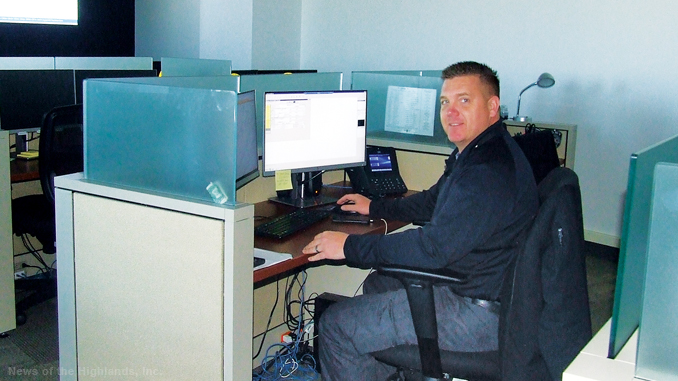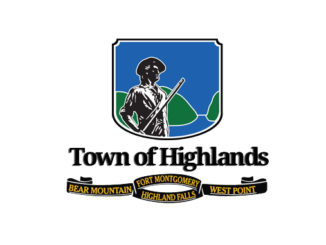
Did you ever hear of the Hudson Valley Crime Analysis Center? The unit had its one-year anniversary on March 5. But not many people know about it. The center works behind the scenes.
“We’re a force multiplier,” Director Eric Johansen explains. “We’re a resource for local agencies that are investigating crimes or trying to prevent them from occurring.”
Mr. Johansen was formerly the chief of the Peekskill Police Department. He has a lengthy commute to his new job in the bottom level of the Emergency Services Building. But he’s content with the change. “It gives me an opportunity,” he told us, “to work with a number of different police departments that I wouldn’t have worked with.”
We could probably guess which departments he’s helped from looking at the police patches on a bulletin board in the back of the room. That’s what the center is — a large room with rows of computer terminals leading up to a video wall that is 20 feet wide. The wall includes feeds from surveillance cameras in Newburgh and Middletown, as well as dispatch information from several communities.
The Center serves Dutchess, Ulster and Orange Counties. It’s the ninth operation of its kind in New York State. And other states are planning to follow New York’s example.
On the day of our visit, the crime center is dark with computer screens and the video wall providing the only glow. We feel like we should whisper so we don’t disturb the few people who are doing research. But we’re still not sure of what the center does.
So Mr. Johansen introduces us to Paul Weissinger, a Middletown detective who is trying to find someone. “He won’t stop until he finds him,” Mr. Johansen predicts — leading us to believe that the detective has used this service in the past.
We learn that Chief Todd Hazard in Cornwall had asked the center for help in locating stolen goods. The search was fruitless, but the chief still found it helpful. Imagine if one of his officers had to contact every pawn shop in the Hudson Valley!
Chief Ken Scott of Highland Falls has asked the center to analyze evidence (including a cell phone) obtained during search warrants. He has also used the center’s facial recognition services while looking for a suspect.
Mr. Johansen refers to what he calls “real time” involvement. For example, his department may receive a license plate number during a car chase. While the chase continues, the center provides a name and history for the suspect as well as a description of who his friends are.
The number of people at the center can vary with the assignment. Members of other agencies may be attached to the center to create a task force. When their efforts help officers on the street make an arrest, there’s a celebration in the dark room with computer terminals. Mr. Johansen says it’s not unusual to see workers exchanging “high fives.” But not many of us are aware of what they’ve done.



